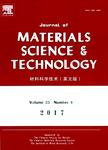Mechanical properties and deformation mechanisms of Ti-3Al-5Mo-4.5V alloy with varied β phase stability
Mechanical properties and deformation mechanisms of Ti-3Al-5Mo-4.5V alloy with varied β phase stability作者机构:Institute of Metal ResearchChinese Academy of Sciences School of MetallurgyNortheastern University
出 版 物:《Journal of Materials Science & Technology》 (材料科学技术(英文版))
年 卷 期:2018年第34卷第12期
页 面:2507-2514页
核心收录:
学科分类:0817[工学-化学工程与技术] 0806[工学-冶金工程] 08[工学] 0805[工学-材料科学与工程(可授工学、理学学位)] 080502[工学-材料学] 0703[理学-化学] 0802[工学-机械工程] 0801[工学-力学(可授工学、理学学位)] 0702[理学-物理学]
基 金:supported by the National Natural Science Foundation of China(No.51401221,51622401 and 51628402) the support from the Strategic Priority Research Program of the Chinese Academy of Sciences(No.XDB06050100)
主 题:Dual-phase titanium alloy β phase stability Work hardening behavior Deformation mechanisms
摘 要:Evolution of deformation mechanisms and mechanical properties of Ti-3Al-5Mo-4.5V alloy with different β phase stability have been systematically investigated. β phase stability alteration is achieved through quenching temperature variation from dual α+β field(700℃) to single β field(880℃). Tensile tests at ambient temperature show that apparent yield strength of the alloy experiences an abrupt decrease followed by a significant increase from 700℃ to 880℃. Work hardening behavior is characterized by transition from the initial two-regime feature to the three-stage outlook. Concurrently, the maximum working hardening rate drops from 14000 MPa to 3000 MPa, which is concurrent with the shrinking volume fraction of primary a phase. Detailed discussion about the relationship between deformation mechanisms and β phase stability has been outlined.



